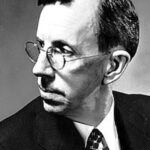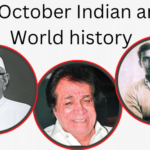Masatoshi Koshiba (19 September 1926 – 12 November 2020) was a Japanese physicist. He was awarded the Nobel Prize in Physics in 2002.
Life and Career
Masatoshi Koshiba was born on 19 September 1926, in Toyohashi, Aichi, Japan. He attended the University of Tokyo, where he earned his bachelor’s degree in physics in 1951. Koshiba continued his studies at the University of Rochester in the United States, where he received his Ph.D. in physics in 1955. After completing his doctoral studies, Koshiba returned to Japan and became a professor at the University of Tokyo.
He conducted research in the field of cosmic ray physics, specifically studying the properties of neutrinos, which are elusive subatomic particles. Koshiba’s most significant contribution came through his work on the Kamiokande experiment, a large underground detector located in the Kamioka Observatory in Japan.
In 1987, the Kamiokande experiment detected neutrinos from Supernova 1987A, a monumental discovery that confirmed the detection of neutrinos from a supernova event and provided crucial insights into the behavior of these particles. Masatoshi Koshiba passed away on 12 November 2020, in Tokyo, Japan.
Award and Legacy
Koshiba received several prestigious awards throughout his career, including the Nobel Prize in Physics in 2002. He was awarded the Nobel Prize along with Raymond Davis Jr. for their groundbreaking contributions to astrophysics, particularly the detection of cosmic neutrinos.
Masatoshi Koshiba’s contributions to the field of neutrino astrophysics and his role in the Kamiokande experiment had a profound impact on our understanding of the cosmos. His work not only confirmed the existence of neutrinos but also provided insights into the inner workings of stars and supernovae.
Koshiba’s legacy continues to inspire scientists in the fields of particle physics and astrophysics, and his groundbreaking discoveries have paved the way for further research in these areas.
Observer Voice is the one stop site for National, International news, Editor’s Choice, Art/culture contents, Quotes and much more. We also cover historical contents. Historical contents includes World History, Indian History, and what happened today. The website also covers Entertainment across the India and World.










